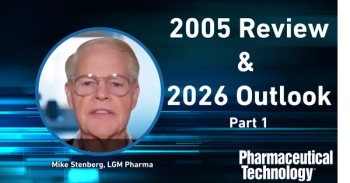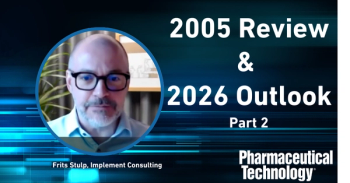
- Pharmaceutical Technology-08-02-2017
- Volume 41
- Issue 8
EMA Increases Support for SMEs
EMA recognizes the need to provide more assistance and guidance to SMEs developing new medicines and applying for marketing authorizations.
The European Medicines Agency has decided that it needs to give more help to small and medium enterprises (SMEs) in developing new medicines, 11 years after the agency first launched a scientific advice project to assist them in bringing innovative drugs to market. The scheme has been a relative success. At the end of 2016, a total of 1810 SMEs were registered with the agency’s SME Office, a 12% rise on the number in 2015 and an increase of more than 10-fold compared to 2006, the first year EMA was legally obliged to provide scientific assistance to SMEs (1).
Manufacturing inadequacies raise quality issues
There is, however, still a high proportion of failures among SMEs in Europe in the development of new medicines. Many do not even reach the stage of making marketing authorization applications. A high proportion of those that do have their applications rejected were because of manufacturing inadequacies that have raised quality issues with their products.
EMA is now trying to tackle some of the causes of the deficiencies behind these failures by launching a new action plan to help SMEs become more efficient drivers of pharmaceutical innovation. Yet it is unclear how the plan will help small companies deal with challenges in the collection of data on the development of manufacturing processes. One key strategy behind the plan is to run EMA’s assistance programme for SMEs in parallel with a newly introduced framework of collaboration with academia so that universities and research institutes, which are the source of many start-ups, also understand more about the regulatory requirements behind the approval of new medicines.
In 2016, EMA handled 174 requests (1) for assistance from SMEs on both regulatory and administrative aspects of pharmaceutical legislation, the highest ever figure. It is not surprising that increasing numbers of small companies are looking for help because so many lack the adequate resources. Forty-one percent were categorized as being micro in size with staff of 10 or less and annual turnover at or below €2 million. Only 25% were classified as being medium sized with staff of 250 or less and turnover at or below €50 million. Half were owned by individual entrepreneurs. Only 7% benefitted with funding by venture capital and other private investment and 5% from funds by business angels.
Development assistance through PRIME
In the 11 years from late 2005, when the European Union’s SME legislation on development assistance came into effect, 107 marketing authorization applications by SMEs for human medicinal products had been made to EMA, according to the SME Office’s 2016 annual report (1). Of these, 59 received positive outcomes and 48 negative ones. A study of marketing applications from 2011-2015 showed that among SME submissions for human medicines, 88% of files had major clinical objections and 73% had major quality issues.
Many SMEs appear to have difficulties developing innovative medicines that have the potential to deal with the unmet needs of patients, particularly those with rare conditions. One of the problems facing small companies is the requirement for reliable data on manufacturing processes. In 2016, EMA introduced a new scheme called PRIME (PRIority MEdicines) to give early and proactive support to those developing medicines that target, in addition to uncommon diseases, conditions such as Alzheimer’s disease and other dementias.
“PRIME aims to foster better planning of medicine development,” Guido Rasi, EMA’s executive director, noted in the agency’s latest annual report issued in May 2017 (2). “This will help companies to generate the high-quality data we need to assess the quality, safety, and efficacy of medicines.”
EMA has stressed that the scheme is designed to help those companies able to “collect robust data and submit high-quality marketing authorization applications” (2). Of the 84 applications for PRIME assistance received in 2016, half were from SMEs. Altogether, 15 medicines were granted help, of which 10 were advanced therapies. “As the programme is intended for the most promising medicines, only a relatively small number have been accepted in the scheme so far,” the agency says (2).
EMA’s action plan
In the EMA’s action plan for SMEs (3), issued in May 2017, the development of treatments for unmet needs has been pinpointed as an area where small companies require more support. This means, according to the agency, encouraging SMEs to make more effective use of PRIME by improving the quality of their marketing authorization applications.
The plan identifies a total of 16 actions for implementation in 2017-2020. One aim is to have more initiatives specifically tailored to deal with SME requirements. “SME-friendly” written advice will, for example, be published on the introduction of the data standards in the Identification of Medicinal Products (IDMP) drawn up by the Geneva-based International Organization for Standardization (ISO).
One key objective is to bring SMEs into closer touch with major players in the development of new pharmaceuticals such as research institutes, biotech incubators, innovation clusters, and private and public investors. This objective will be achieved both by increased awareness among SMEs about these sources of knowledge and support in innovation activities, but also by the regulators themselves doing more to make these players aware of the requirements of small companies. One way is to increase the profile of the scientific advice programmes of EMA and also those of national medicines agencies.
Collaborating with academia
EMA wants also to strengthen the ties between its Innovation Task Force (ITF) and SMEs. The ITF is a multidisciplinary group of scientific, regulatory, and legal experts that provides a platform for early dialogue with companies developing emerging innovative therapies and technologies. Almost half of the ITF’s 41 meetings in 2016 were with SME drug developers.
The ITF aims to aid SMEs-and the agency’s own staff and committee members-by proactively identifying scientific, legal, and regulatory issues of emerging therapies and technologies. The taskforce can act as a bridge between SMEs and academia because it also provides a platform for discussions with academics and researchers on similar scientific and regulatory matters arising from new technologies.
In its framework on collaboration between the agency and academia, published in March 2017, EMA noted that “although academic contribution has been intrinsic to the European Medicines Agency’s work since its creation, gaps remain and new challenges keep emerging” (4). In a way, the problems with academia are similar to those with SMEs. There is a lack of awareness of the work of the European medicines regulatory network and of the need for regulatory support to ensure that academic research achievements are translated into novel medicines.
At the same time--as with SMEs-a divide has opened up between universities and research institutes and regulators. Many SMEs in the pharmaceutical and other sectors tend to be wary of regulations, with a wish for reductions in regulatory costs and burdens. This might conflict with the EMA’s objectives of improving marketing authorization applications through the provision of “robust data.”
SMEs are also under pressure to deliver data that not only satisfies the requirements of regulatory agencies. Other bodies and groups, such as Europe’s health technology assessment (HTA) organizations, that help fix the prices of new medicines and the level of reimbursement at the national level, healthcare professionals, and patients associations are also being given a role in the shaping of scientific advice to drug developers.
EMA and the European Network for Health Technology Assessment (EUnetHTA), representing HTAs, announced in July 2017 that they are setting up a joint platform to provide medicine developers with simultaneous, coordinated advice to facilitate uniformity in data requirements. “Our work with EUnetHTA aims to align our respective requirements as much as possible so that developers can generate one set of data that allows the assessment of both the benefits and risks of a medicine and its added value,” said Rasi (5).
EMA is testing a scheme under which more information would be supplied to healthcare professionals on the quality data from the manufacturing process on which regulators have based comparability assessments for the authorisation of biosimilars. Also, SMEs, together with larger drug companies, are concerned that the introduction of the IDMP standard for pharmaceutical data, including that relating to manufacturing processes, will make data collection for authorization applications more difficult.
EMA’s desire to make greater use of real-world data covering the whole lifespan of a drug from its manufacture through to its consumption by patients on the market will result in demands for even more data from medicine producers. The agency sees real- world data as part of Big Data or the application of very large data sets of far greater volume and variety than traditional data sets. “These data have the ability to significantly contribute to the way the benefit-risk balance of medicines is assessed over their entire life cycle,” says the agency (2). An important aim behind the EMA’s building of closer relations with SMEs is this ambition to ensure that regulatory decisions are based on high quality and in-depth evidence.
References
1. EMA, SME Office Annual Report 2016 (London, May 2017).
2. EMA, EMA Annual Report 2016 (London, May 2017).
3. EMA, EMA Action Plan for Small and Medium-Sized Enterprises,
EMA/337458/2017 (London, May 2017).
4. EMA, Framework of Collaboration Between the European Medicines Agency and Academia, EMA/125511/2017 (London, March 2017).
5. EMA, “EMA and EUnetHTA step up interaction to align data requirements,” Press Release, 4 July 2017.
Article Details
Pharmaceutical Technology Europe
Volume 29, Number 8
July 2017
Pages: 6–8
Citation
When referring to this article, please cite it as S. Milmo, “EMA Increases Support for SMEs," Pharmaceutical Technology Europe 29 (8) 6–8 (2017).
Articles in this issue
over 8 years ago
Using QbD in Topical Drug Manufacturingover 8 years ago
Targeting Drug Delivery with ADCsover 8 years ago
Optimizing Cell-Culture Mediaover 8 years ago
Gottlieb Tackles Opioids, Drug Costs, and Innovationover 8 years ago
Larger Peristaltic Pumps Allow Scale-Upover 8 years ago
A Look at Batch Record Reviewover 8 years ago
Drying, Granulating, and Coating System Offers Modularityover 8 years ago
Heavy-Duty Multi-Agitator Mixerover 8 years ago
CDMOs: New Administration, New Frontierover 8 years ago
Single-Use Systems Expand Scale of ChromatographyNewsletter
Get the essential updates shaping the future of pharma manufacturing and compliance—subscribe today to Pharmaceutical Technology and never miss a breakthrough.




